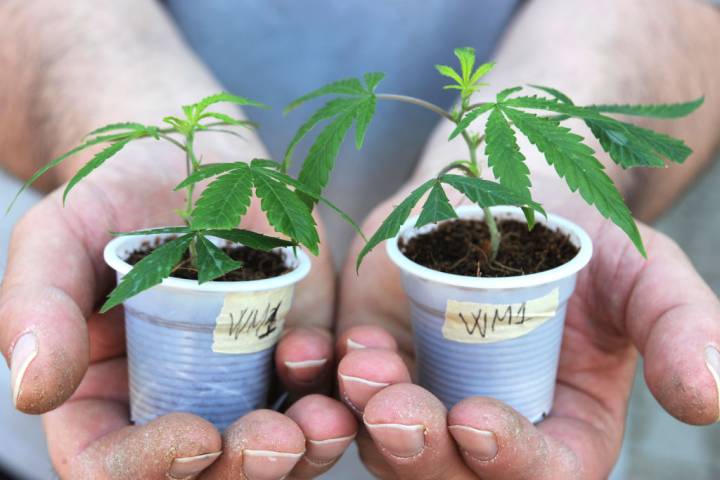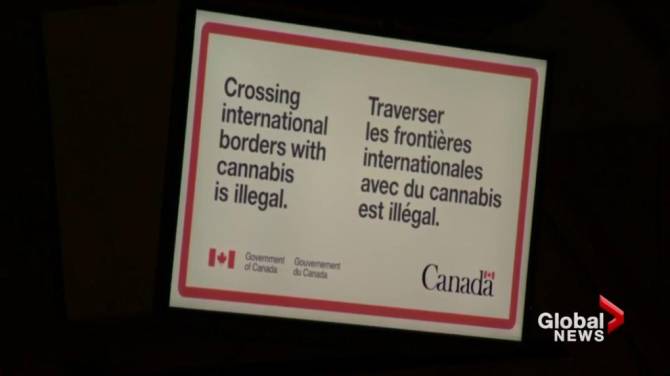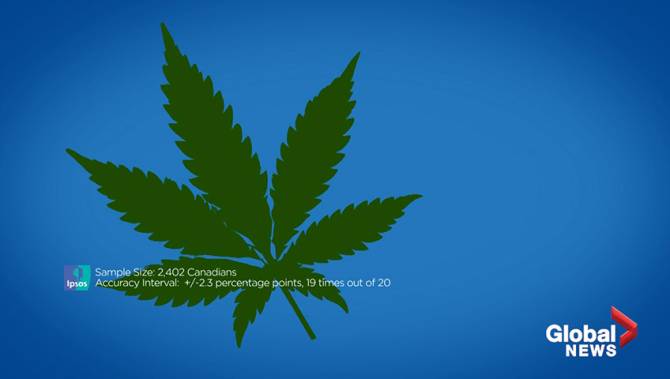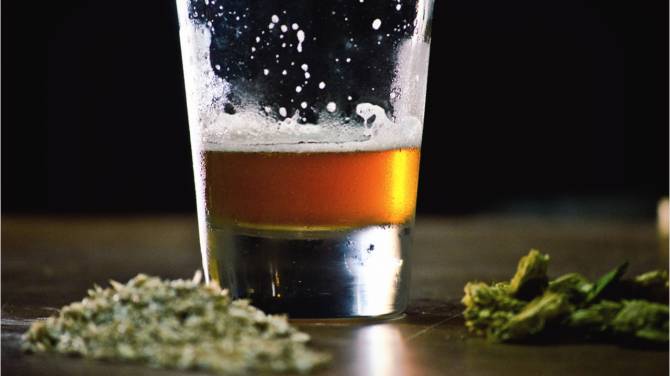

It’s often presented as Cannabis 101: indica strains (from the shorter, bushy version of the plant) are sedating, while sativa (from the taller, spindlier version) are more uplifting.
It’s a claim repeated on most provinces’ cannabis education sites. But is it accurate?
“In brief, I would say no, it is not,” says Jason Busse of McMaster University’s Centre for Medicinal Cannabis Research.
“I think the classical characterization of indica versus sativa is not very helpful when you’re trying to understand what the active agents in the product are going to be.”
Washington State-based cannabis scientist Ethan Russo agrees.
“It’s scientifically invalid. Whether it’s actually leading anyone astray, I don’t know, but these things are so interbred to make the whole discussion ridiculous.”
Part of the problem, scientists say, is that the original subspecies of sativa and indica have been hopelessly scrambled by decades of interbreeding, done in black-market conditions. The other is that there simply isn’t research that supports predicting those effects.
“It’s hard for us to know whether this is accurate or inaccurate, because it hasn’t really been studied to the extent that people would like it to be,” says Vancouver-based cannabis writer Amanda Siebert.
“It’s a framework that’s used because it makes it easy for consumers to pick products, but is it the most accurate? I don’t think so.”
READ MORE:
Are marijuana strains what they say on the label? Often they’re not, DNA testing shows
WATCH: The Wine Spectator of Cannabis: a digital guide to legal cannabis

Most provincial sites predict effects of sativa, indica. Should they?
A quick look at provincial cannabis sites show that most predict the indica is sedative/sativa is energizing effect, though always with a bit of hedging.
Quebec’s site says that indica’s effects are “usually described as potentially calming, relaxing or sleep-inducing,” while sativa is “usually described as potentially energizing, uplifting or mentally stimulating.” (They add that, “There is no scientific proof of these effects, which can vary from person to person based on numerous factors.”)
P.E.I. says the strains “are often thought” to have those effects, New Brunswick cautions that “the possible effects below do not necessarily apply to all people,” Newfoundland and Labrador says that, “Most consumers have used these three cannabis types (sativa, indica and hybrid) as a touchstone for predicting effects,” while Alberta says that “most people find” that the two subspecies have different effects.
Ontario and B.C. are the exceptions, avoiding claiming that sativa and indica have different effects at all. Ontario’s site confines itself to saying that the plants grow differently.
The Newfoundland and Labrador Liquor Corporation did not respond to a request for comment on the information on their site,.
WATCH: Prospective Canadian cannabis investor gets lifetime U.S. entry ban

READ MORE:
Ontario marijuana buyers are Canada’s grumpiest: Ipsos poll
Plants’ appearance tells you little
Where does the claim come from in the first place?
“I doubt anyone knows at this point,” Russo says. “There are all kinds of claims – it’s a problem. It’s just another byproduct of prohibition.”
A study published in October argued that years of interbreeding have made it impossible to tell the two subspecies apart.
“Categorizing cannabis as either sativa and indica has become an exercise in futility,” wrote John McPartland, who teaches at the University of Vermont’s medical school. “Ubiquitous interbreeding and hybridization renders their distinction meaningless.”
McPartland did not respond to an interview request.
As a result, Siebert says, simply looking at a plant doesn’t tell you much about its psychoactive effects.
“People will say that a sativa plant grows skinnier leaves, and much taller, and an indica plant will grow short and stout. Does that speak to the content of THC and CBD and the terpenes in the flowers? Not necessarily.”
WATCH: Smoking and growing cannabis in homes can affect sales and insurance

READ MORE:
Can you legally grow your own pot? Yes – but no. At least for now. Here’s why
Looking in the wrong place?
The experts that Global News spoke to said that a better guide to predicting effects were substances called ““terpenes.”
Terpenes are the chemical compounds that make one cannabis strain smell like lemons (‘limonene‘), or another like pine needles (‘pinene‘). Combined with THC, they may also be the key to understanding why different strains of cannabis can have different effects on the mind.
“Myrcene plus THC equals sedation. Myrcene is what I call the ‘couch lock factor’ in cannabis,” Russo says.
“Similarly, limonene will produce a mood-elevating effect, strong antidepressant effect, in combination with THC. There are many others.”
“I think that terpenes are really going to emerge, if they haven’t already, as the next tool that we use to classify cannabis,” Siebert says.
In this interpretation, a plant with more of an indica or sativa appearance might have more or less of given terpene, or not as the case may be.
Most provincial sites tell buyers what terpenes are present in dried flower, but rarely explain what terms like ‘caryophyllene‘ and ‘pinene’ actually mean. (B.C. is an exception.)
WATCH: How has legalization changed marijuana consumption in Canada?

Individual differences are key
To confuse things further, cannabis works on different people differently. One person having one kind of experience with a strain doesn’t necessarily mean that another person will have a similar experience.
“I like to keep track of what I’m consuming, and what terpenes are in it, and then I say, ‘Oh, this had this in it, and it made me feel this way,’” Siebert says. “[But] something that works for me, that might make me feel uplifted, might cause someone else to feel tired, or sedated.”
Research, proper breeding on an illegal plant has been challenging
“It’s been virtually impossible to do research on an illegal product,” Busse says. “It’s been very difficult. So there’s a great deal of work going on right now, but there are huge gaps in our knowledge about both the short- and long-term effects.”
Most other widely sold plants — apples, for example — have very formal breeding standards. Scientists can tell you who developed any given variety, when, from what parents, and what the DNA profile should look like. By comparison, cannabis genetics are in a state of chaos: a 2015 genetic analysis of marijuana products labelled by variety showed that strains that were supposed to be different were nearly the same, while strains that were supposed to be the same were different.
It’s not a very surprising result of the fact that the plant breeders were operating illegally, but it does put cannabis scientists at the bottom of a very tall hill. At a point where the public is full of questions, scientists are only beginning a process that may eventually lead to answers.
“When you compare it to other plants, or produce that is made available to consumers, cannabis is in a space where it really is the Wild West,” Busse says. “We haven’t even characterized all the active cannabinoids that are involved in the product, and we don’t know the full effects.”
WATCH: Cannabis is safer for long-term consumption than alcohol: expert

Sativa vs. indica may matter — to home growers
The only real-life situation in which an average user might want to pay attention to the difference between the subspecies is if they were thinking of growing their own, Busse says.
“If you only had a certain amount of space to grow it, you might lean toward the shorter plant. But in terms of trying to make any kind of conclusion about the potency of different cannabinoids based on whether it’s a sativa or indica strain, that’s not particularly helpful.”
READ MORE:
Smelly, fussy, humid: Why you may not want to grow your own legal pot
© 2018 Global News, a division of Corus Entertainment Inc.